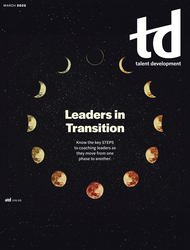TD Magazine Article
Fear and Loathing in the Workplace
Employees express frustration and discontent with employer behaviors.
Sat Mar 01 2025

Bookmark
The lead source of employee tension is whether employers will require workers to return full time to the office. That's according to MyPerfectResume's 2025 State of the Workforce Report. Most workers view the move as a form of control or a lack of trust. More than one-third of respondents said nothing their company offers would persuade them to give up the freedom of remote work. That resistance could lead 41 percent of employees to look for a new job and 14 percent to quit, according to WFH Research in its November 2024 survey of working arrangements and attitudes.
Because HR, as the primary organization communicator, is typically the face of return-to-office policies, the current perception of HR among employees is overwhelmingly negative. Almost 90 percent of MyPerfectResume respondents hesitate to reach out to HR for work-related issues because they fear potential repercussions. And with burnout still widely prevalent—three-quarters of workers have talked to a mental health professional about work-related stress—employees don't believe they have an ally in HR to handle serious issues with confidentiality.
Searching for a new job has its own stresses and complexities at every stage. Individuals without jobs are anxious about finding new employment and paying bills. Those actively applying must navigate the job application and interviewing phases.
A new stress for job seekers is the potential that all their efforts—from application to interview to checking references—are in vain. The 2025 State of the Workforce Report notes that more than eight in 10 recruiters admit to creating ghost roles that don't exist. One-third of those individuals state that one in four of the jobs they post are fake.
A high rate of burnout and dissatisfaction that inspires increased turnover rates combines with a stacked recruitment process may mean that companies experience understaffing during 2025, says MyPerfectResume. That problem will lead to remaining staff having to compensate and burning out—increasing the likelihood that they, too, will be on the hunt for a new job.

More from ATD
